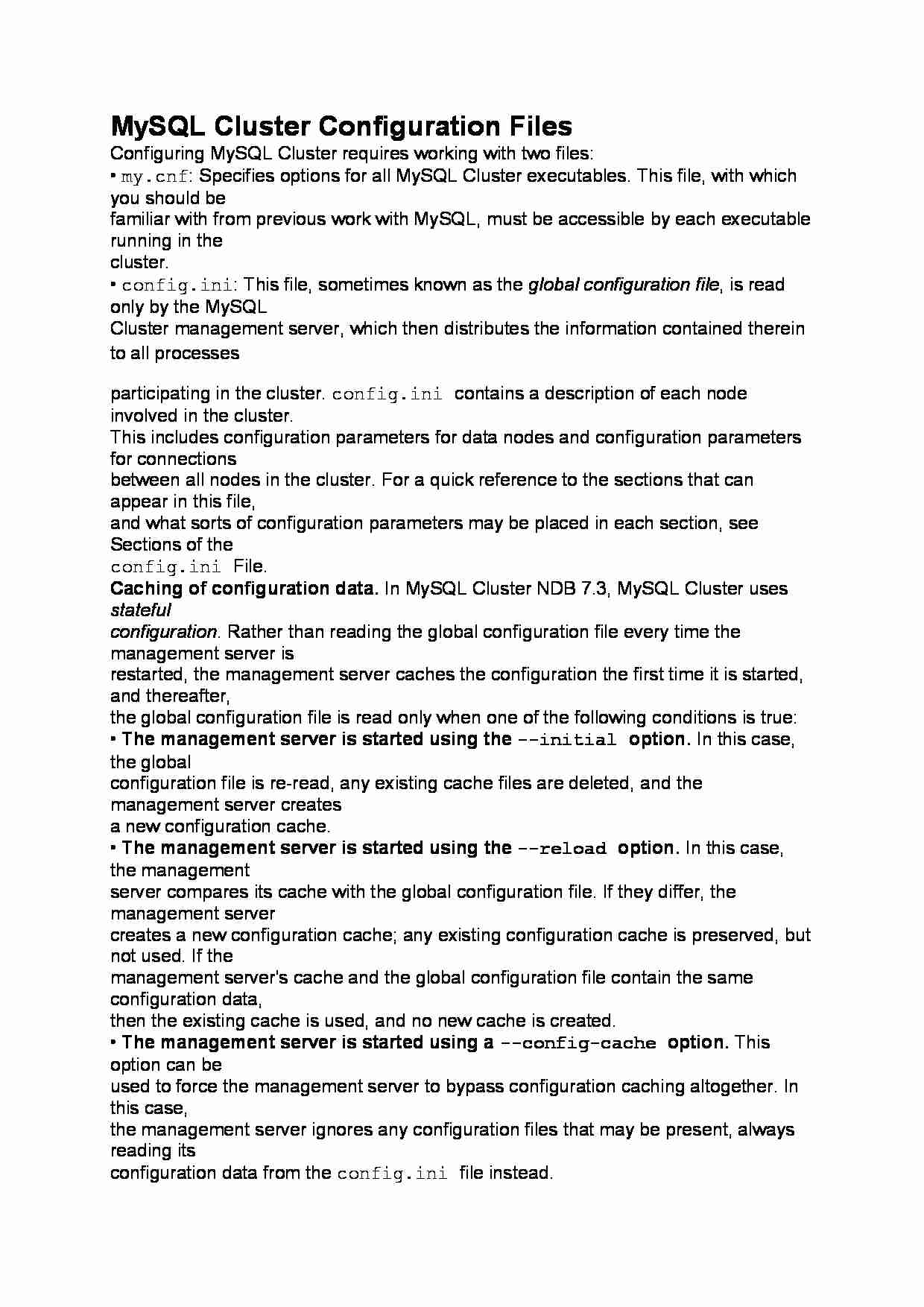To tylko jedna z 2 stron tej notatki. Zaloguj się aby zobaczyć ten dokument.
Zobacz
całą notatkę


MySQL Cluster Configuration Files
Configuring MySQL Cluster requires working with two files:
• my.cnf: Specifies options for all MySQL Cluster executables. This file, with which you should be
familiar with from previous work with MySQL, must be accessible by each executable running in the
cluster.
• config.ini: This file, sometimes known as the global configuration file, is read only by the MySQL
Cluster management server, which then distributes the information contained therein to all processes
participating in the cluster. config.ini contains a description of each node involved in the cluster.
This includes configuration parameters for data nodes and configuration parameters for connections
between all nodes in the cluster. For a quick reference to the sections that can appear in this file,
and what sorts of configuration parameters may be placed in each section, see Sections of the
config.ini File.
Caching of configuration data. In MySQL Cluster NDB 7.3, MySQL Cluster uses stateful
configuration. Rather than reading the global configuration file every time the management server is
restarted, the management server caches the configuration the first time it is started, and thereafter,
the global configuration file is read only when one of the following conditions is true:
• The management server is started using the --initial option. In this case, the global
configuration file is re-read, any existing cache files are deleted, and the management server creates
a new configuration cache.
• The management server is started using the --reload option. In this case, the management
server compares its cache with the global configuration file. If they differ, the management server
creates a new configuration cache; any existing configuration cache is preserved, but not used. If the
management server's cache and the global configuration file contain the same configuration data,
then the existing cache is used, and no new cache is created.
• The management server is started using a --config-cache option. This option can be
used to force the management server to bypass configuration caching altogether. In this case,
the management server ignores any configuration files that may be present, always reading its
configuration data from the config.ini file instead.
• No configuration cache is found. In this case, the management server reads the global
configuration file and creates a cache containing the same configuration data as found in the file.
... zobacz całą notatkę




Komentarze użytkowników (0)